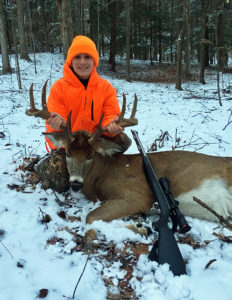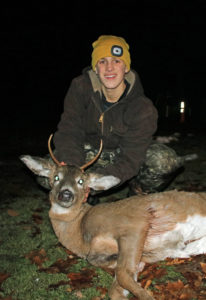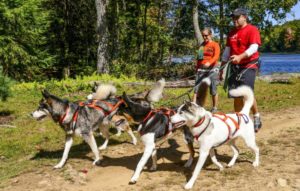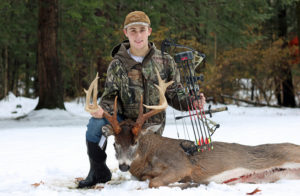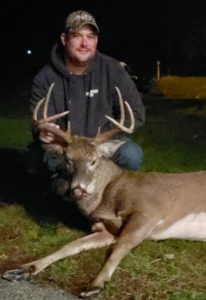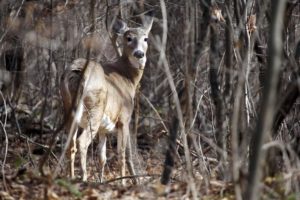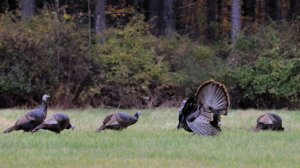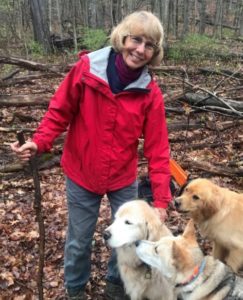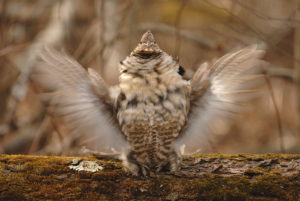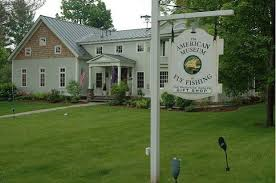According to figures provided by MassWildlife, the preliminary statewide deer harvest for 2018 was 14,513 – a new record high. That compares with the 2017 total of 13,220. The 2018 preliminary harvest figures by season are as follows:
• Youth Deer Hunt Day (Sept. 29): 138
• Paraplegic Deer Hunt (Nov. 1–3): 3
• Archery Season (Zones 1-9: Oct. 15–Nov. 24 and Zones 10-14: Oct 1-Nov. 24): 5,190
• Shotgun Season (Nov. 26–Dec. 8): 6,495
• Primitive Firearms Season (Dec. 10–Dec. 31): 2,687
Zone Adult Male Button Buck Female Total
1 304 14 85 403
2 438 6 97 541
3 462 28 180 670
4N 456 16 154 626
4S 299 11 68 378
5 487 31 186 704
6 111 2 34 147
7 410 46 248 704
8 595 40 250 885
9 786 115 557 1,458
10 1,220 238 1,193 2,651
11 1,773 299 1,292 3,364
12 181 17 101 299
13 354 120 426 900
14 297 123 363 783
Statewide 8,173 1,106 5,234 14,513
MassWildlife believes that deer density and hunter effort tend to be the most important factors influencing harvest from year to year. However, there were two important changes for the 2018 season that may have led to the record harvest. One factor was the opening of over 7,500 acres of Wachusett Reservoir Public Land resulting in a Zone 9 harvest increase from last year by about 300 deer. The other factor was the two-week extension to the archery season in Zones 10-14. That resulted in an increase of over 700 deer being taken during that period.
According to my unofficial figures, the deer harvest has been on an increase over the last several years as evidenced by the following figures which were provided yearly by MassWildlife. Total statewide harvest beginning in 2014 and ending with 2018 were as follows:11,165, 10,142, 12,233, 13,255 and this year’s 14,513. In our Western District WMZ 1 through WMZ 4, the figures were: 1,737, 1,887, 2,197, 2,318 and this year’s 2,618.
MassWildlife noted that while total harvest by zone can be informative, it doesn’t provide the complete picture. Thus, it is important to assess harvest data and monitor trends by Wildlife Management Zones. Total harvest is influenced by deer density and the number of antlerless deer permits that they allocate in each zone, as well as annual changes in hunter effort, harvest-rates, success-rates, weather, etc.
MassWildlife Deer Project Leader David P. Stainbrook will spend the next few months thoroughly analyzing the deer harvest and biological data as well as assessing deer population trends in each zone. The results and recommendations for the 2019 season will take place at the annual deer management review, (usually at the June Fish &Wildlife Board Meeting). A complete harvest summary will be posted on the MassWildlife website shortly after the annual deer review.
Turkey Regulation proposed changes
In my November 18, 2018 column, “MassWildlife proposes new turkey-hunting regulations”, I listed the proposed new regulations and the reasons for the changes which were presented to the F & W Board in November. Here is a condensed recap of the proposed changes.
• Increase the annual limit to three birds (2 bearded turkeys in the spring and 1 of either sex in the fall).
• Increase the daily bag limit to two per day during the spring season
• Expand the fall season (ARCHERY ONLY) to coincide with the archery deer season.
• Allow Youth Turkey permits issued to youth aged 12–14 for use in the fall turkey hunting seasons.
MassWildlife staff will be hosting two informational meetings in February to provide the public with an opportunity to give feedback. Turkey Biologist Dave Scarpitti will make a short presentation on the turkey hunting review and regulation proposals, followed by a Q&A session for the public to give feedback. The meeting dates are: Thursday, February 7 at 6 pm at MassWildlife Field Headquarters (1 Rabbit Hill Road, Westborough, MA 01581), and Wednesday, February 13 at 6:30 pm at the Palmer Public Library (1455 N. Main Street, Palmer, MA 01069).
If bad weather requires rescheduling or cancellation, they will post a notification.
Anyone unable to attend the informational meetings may comment on the changes by mail to: Turkey Season Feedback, MassWildlife Field Headquarters, 1 Rabbit Hill Road, Westborough, MA 01581. Public feedback will be considered by MassWildlife staff and provided to the Fisheries and Wildlife Board. Please note that if changes are endorsed by the Board, a formal public hearing and public comment period will be scheduled and publicized.
Culvert Replacement Municipal Assistance Grant Program
The MA Division of Ecological Restoration (DER), Massachusetts Department of Fish and Game, is seeking proposals from Massachusetts municipalities interested in replacing an undersized, perched, and/or degraded culvert located in an area of high ecological value. Total funding available in FY20 is anticipated to be $750,000. Additional funding from other sources may be available and further details, including eligible towns and projects, will be included when the Request for Response (RFR) is issued on February 20, 2019. The purpose of this funding is to encourage municipalities to replace culverts with better designed crossings that meet improved structural and environmental design standards and climate resiliency criteria.
Only projects that intend to meet the goals of the Massachusetts Stream Crossing Standards will be considered for funding. Incorporating these Standards into culvert design will improve river function and access for fish and wildlife, and will reduce hazards to public safety, such as flooding, culvert failure, and road washout. Massachusetts municipalities are eligible to apply for funding to support advancement of one culvert replacement project toward completion. Interested communities should view the full announcement, including eligibility and evaluation criteria, at https://www.mass.gov/how-to/culvert-replacement-municipal-assistance-grant-program.
The PRE-Request For Responses (RFR) period, January 23, 2019 to February 20, 2019, provides a preview of the RFR that DER will issue February 20, 2019. Applicants are strongly encouraged to contact Carrie Banks to discuss possible projects during this period. The RFR will be released at 3:00 PM on February 20, 2019. The application deadline is 5:00 PM, March 20, 2019.
Applicants are encouraged to attend a Grant Briefing to learn more about this funding opportunity. During Grant Briefings, DER Staff will explain the Culvert Replacement Municipal Assistance Grant Program, answer questions, and be available to meet one-on-one with municipalities to discuss proposed projects. A local Grant Briefing information is scheduled on February 4 from 1:00 to 2:30 PM at the Adams Town Hall, 8 Park Street, Adams. Attendees should RSVP to carrie.banks@mass.gov or 413-579-3015 in case of inclement weather and the briefings either need to be canceled or postponed. Check the Division of Ecological Restoration’s website (www.mass.gov/DER) for the most up-to-date information regarding grant briefings.
Bunny Hunt Results
Some 20 hunters signed up for the Berkshire Beagle Club bunny hunt and game dinner which was held on Saturday, January 26. Four cottontail rabbits were checked in and the largest one weighed 2.89 lbs. It was bagged by David Morris, of Lee, in front of Tom King’s (of Cheshire) dog Bomber. Only one snowshoe hare was checked in and it weighed 3.46 lbs. It was bagged by Pat McGrath of Dalton who shot it in front of Tony Cornwell’s (of Peru) dog Izzy. 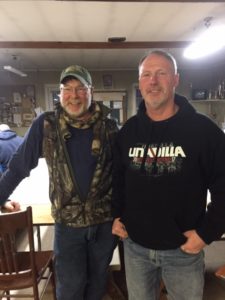
A delectable meal of venison chili, bear chili, venison spaghetti, venison meat loaf and bear stew was prepared by members Dick Kalisz and Ted Billis. There was also a great raffle.
Upcoming Derbies
The 33rd Annual Jimmy Fund Ice Fishing Derby will be held on Sunday, February 10 at the Frank Controy Pavilion on Onota Lake from 6:00 AM to 2:00 PM. Admission is: Adults – $15, Kids – $5. Tickets are available at Onota Boat Livery (413)443-1366, Maces Marine (313)447-7512 or on the day of the derby at the Pavilion. There will be three divisions of trophies and prizes and plenty of good food. For more information, contact Leo Kruczkowski (413)822-2745 or Chico Gelinas (413)282-9486.
The Ashfield Rod & Gun Club’s Annual Youth Ice Fishing Derby will take place on Saturday, February 9 from 8:00 AM to 12:00 PM. Prizes will be awarded for all legally caught fish checked in at the The Ashfield Lake House. After the derby, a spaghetti dinner will be held at Sanderson Academy. There will be a $5 charge for adults, free for kids. Following the dinner, there will be a presentation given by Tom Ricardi on birds of prey. For additional derby information, contact Joe Miraglia at (413) 628-4400.

